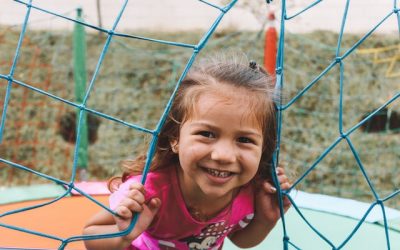by Regina Kupecky LSW
Regina was an adoption placement worker for more than 25 years. Now she helps children and families address attachment issues at the Attachment and BondingCenter of Ohio, and trains nationally and internationally on various adoption topics. Regina has co-authored two books, Adopting the Hurt Child and Parenting the Hurt Child, with Dr. Gregory Keck. She has recently completed a sibling curriculum.
Those who know me from foster care and adoption conferences, trainings on sibling rights, or my writings about siblings, know that I am a long-time sibling rights advocate. Not only have I placed many sibling groups together who have thrived, I have seen how connections help siblings’ loss, abandonment, and identity issues. If we place more children together, we need to recruit fewer families.
Recently, however, I have become alarmed by a spate of requests to support sibling rights over attachments between very young children and their foster-to-adopt parents. The children in question typically have little or no attachment to their siblings. Many have never even met their brothers or sisters.
Workers are horrified to learn that I think their young charges should be adopted by the parents with whom they have a secure attachment, instead of moving to another family with their sibling. Poor planning that brought siblings into separate foster homes in the first place cannot be fixed by uprooting the children from their only known parents.
Below is an example of the type of case I’m talking about—a case in which the siblings are firmly attached to separate parents and not connected to one another at all. In such cases, it is often not in siblings’ best interest to be placed together.
At three months, Jimmy was placed with a foster parent who has lovingly raised him for three years. Jimmy is very attached to his foster mom, and she wants to adopt him. Meanwhile, when Jimmy was one, his birth mom had Cindy, who was placed in another foster home when she was a baby. (Why? No one ever knows.) Those parents want to adopt her.
Jimmy and Cindy are now ages three and two. They have seen each other a few times at birth parent visits, but don’t know one another and feel most secure with their respective foster families. Then the birth parents’ rights are finally terminated, and some worker decides it is best to remove them both from the only families they have ever known and place them together with a third family.
“Why?” I ask. The answers trouble me.
“Well,” said one earnest worker, “they aren’t the kids’ real parents, they are just foster-to-adopt.”
I thought we did away with this “real” stuff 20 years ago. The parents are real to the child. They give real food, real love, real cuddles, real discipline. They are the real parents, the adults who have parented the kids almost all of their lives.
“You see,” she said, and dropped her voice, “they haven’t legalized, so we are still able to make the decisions.”
“But,” I countered, “they haven’t legalized because the children weren’t in permanent custody. If you don’t believe these are the child’s real parents, you must think adoptive parents aren’t real either. Don’t disturb them if they are doing well. Let each family adopt their child and hope that they want to be in contact. Put the sibling information in the life book so someday they can find each other. If you want them together, put them together to begin with.”
“We want them together,” explained another worker, “because we can find a home for them together. It is too hard with the older kids but these kids are young. Lots of people want them so the foster-to-adopt people will have to let them go.”
“Wait!” I replied. “Does anyone remember the best interests of the child? Of course you can find a home, and of course some young children can withstand the blow of losing their parents. But why do we want to force these children to again suffer one of the most severe losses a child can have—the loss of his or her mother—just because we can?”
Why would we move a child just because we can? Do we have so little power in our lives that we have to gain it by rearranging the lives of toddlers and pre-schoolers?
Another worker lamented about a three-year-old placed with a single mom. “We can do better. She could have a two-parent family with her little brother.”
But if the single mom isn’t good enough, what was the child doing there for three years? Would we remove children from single parents to give them to two-parent families if they were birth children? Of course not. There’s no good reason to remove a foster child from a stable, caring mom who, single or not, is emotionally bonded with the child and wants to adopt.
Workers and agencies who are belated champions of sibling rights need to change their practice. They need to train intake workers to call a sibling’s foster family first when searching for a foster-to-adopt home. They need to arrange visits so siblings can form bonds, talk to families about sibling rights in training, and change the system that made the problem. It is not the children’s job to sacrifice their new families to fix bad social work practice.
For these cases, we should use a different standard. In a best practice world, sibling-friendly agencies will place siblings together from the start and there will be no problem. If, however, the siblings are attached to separate foster parents, have no relationship, and their respective foster families want to adopt, we should support permanency that gives the children ongoing stability and continuity.
Do not separate a child from foster parents who wish to adopt unless the parents are abusing or neglecting him. If the family is loving and safe, leave the child where he is planted and blooming. Child-to-mother attachment occurs before sibling-to-sibling attachment. Do not ask a child to give up her primary bond to her parent to establish, not preserve a relationship with a stranger who happens to have shared the same womb at a different time.
We should place more siblings together when it is in the children’s best interest and there is good social work done. We do not need to hurt children by unnecessary moves and shattered attachments to foster-to-adopt parents in the name of the latest social work buzz words of “sibling ties.”
To contact Regina, call the Attachment and Bonding Center of Ohio at 440-230-1960.
Reprinted from the Summer 2002 issue of Adoptalk, published by the North American Council on Adoptable Children; 651-644-3036; http://www.nacac.org/.




